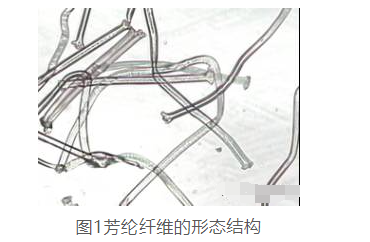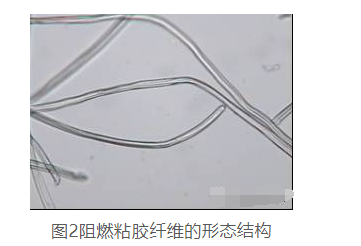How to spin aramid? See what the experts say
How to spin Aramid? See what the experts say!
This article introduces the characteristics and uses of aramid fiber and flame-retardant viscose, discusses issues such as electrostatic entanglement during the spinning process, and proposes technical measures to solve these technical difficulties.
Keywords: aramid fiber; flame retardant viscose; carrier dyeing method; function; short process
With the continuous improvement of living standards, people’s requirements for clothing are becoming more and more diversified. Our company uses aramid fiber and flame-retardant viscose to produce 30-count blended yarn, which has been recognized by customers.
1 Fiber characteristics and uses

1.1 Characteristics of aramid fiber
1.1.1 Good mechanical properties
Aramid is a flexible polymer material. Its low stiffness and high elongation characteristics make it the same spinnability as ordinary fibers. It can be processed into various fabrics or non-woven fabrics with conventional spinning machines. Moreover, aramid fabrics are wear-resistant and tear-resistant. , can be widely used in special fields such as labor protection and military product production.
1.1.2 Excellent flame retardant and heat resistance properties

Aramid fiber is a kind of flame-retardant fiber. Its limiting oxygen index LOI value is ≥28%. It is a flame-retardant fiber. Therefore, aramid fabric will not burn, melt or produce droplets in the air, does not emit harmful gases, and does not support combustion. , self-extinguishing.
1.1.3 Stable chemical properties

Aramid fiber can be used for a long time at high temperatures of 220°C without aging. Its electrical and mechanical properties can remain effective for 10 years, and its dimensional stability is excellent.
1.1.4 Radiation resistance
Aramid fiber has excellent radiation resistance to α, β rays and ultraviolet rays. For example, when the amount of beta-ray radiation accumulates to 1000 Mrad, its intensity remains basically unchanged.
1.1.5 Uses of aramid fiber
Aramid fiber can be used in various aspects of the national economy such as aerospace, electromechanical, construction, automobiles, and sporting goods. It is mainly used for labor protection (firefighting suits, firefighting boots, firefighting bags, etc.), special equipment combat suits (flight suits, firefighting suits, etc.) It is a new type of high-tech synthetic fiber that has the characteristics of ultra-high strength, high modulus, high temperature resistance, acid and alkali resistance, and light weight. The morphological structure of aramid fiber is shown in Figure 1.
Morphological structure of aramid fiber
1.2 Properties of flame retardant viscose fiber
1.2.1 Permanent flame retardant performance
Flame retardant viscose fiber has almost no flame when burning and burns out in a very short time.style=”font-family:Microsoft Yahei, Song Dynasty, Arial, Helvetica, sans-serif;font-size:14px;”>
Because aramid and viscose fibers have large static electricity, are fluffy, and have good fiber length consistency, in order to reduce fiber damage during spinning, a short-flow spinning process is adopted. The process flow is:
BC262 wool blending (automatic cotton feeding machine) → A186 carding → FA306 first bundling → FA306 second bundling → FA306 triple bundling → FA306 quadruple bundling → FA458 roving → FA506 spun yarn → automatic winding
2.4 Problems and technical parameters in the spinning process
2.4.1 Technical measures for carding process
Since both aramid and flame-retardant viscose fibers are chemical fibers, the fibers have good uniformity, few impurities, and serious static electricity. The carding process must ensure less damage, focus on opening, and minimize the increase in knots caused by back flowers. It should mainly solve the problems of difficulty in carding into slivers and blocked inclined tubes. In order to improve the fiber transfer effect, the cylinder-cover plate intervals are 0.35, 0.35, 0.30, 0.30, 0.35mm, the sliver weight is 17.5g/5m, and the upper and lower rollers The spacing is 0.20mm, which improves the smoothness of each channel and reduces clogging and broken bars. The cylinder speed is 330r/min, the licker-in speed is 780r/min, the cover speed is 81mm/min, and the maximum speed is 17r/min. After the above process is put on the machine, the neps of the spun card sliver are 4 grains/g. The cotton mesh has good clarity and the appearance of the slivers is smooth and delicate.
2.4.2 Technical measures for drawing process
Since aramid and flame-retardant fibers have slight static electricity, we must focus on solving the problem of winding rollers and rubber rollers during production. The main measures are:
(1) WSN type coating for drawing rubber rollers is better than acid-treated rubber rollers.
(2) Control the vehicle speed on the low side and the bell mouth on the small side to improve the cohesion of the strips.
(3) The full tube length is changed from 2km to 1.6km to reduce the friction between the sliver and the surface of the upper coiler.
Drawing adopts four-pass merging, the front roller linear speed is 190m/min, the bell mouth is 2.4mm, the cooked sliver weight is 19.5g/5m, and the roller spacing is 9×15×20mm.
2.4.3 Technical measures for roving process
Reasonable selection of the roving twist coefficient should not only improve the cohesion between fibers, but also prevent “hard ends” from the roving. The optimized twist coefficient was set to 71. When spinning, the spinning tension should be kept small to reduce accidental elongation of the yarn.
The roving basis weight is 5.5g/10m, the total draft is 7.09 times, the front roller speed is 180r/min, and the roller spacing is 10×26.5×3lmm.
2.4.4 Technical measures in the spinning process
The total draft of the spun yarn is 30.83 times, the back draft is 1.32 times, the twist coefficient is 376, the front roller speed is 183r/min, the roller gauge is 18×24mm, and the jaw gauge block is 3.0mm.
After testing, the spinning yarn indicators are: weight deviation +1.6%, evenness CV value 14.34%, fine details 5/km, thick places 55/km, neps 145/km, single yarn breaking strength is 17.58cN /tex, strong CV value 9.8%.
From the perspective of yarn quality, except for slightly more neps, other indicators are good. We believe that the main reason for the relatively large number of neps is the relative slippage between fibers and the kink caused by yarn drafting, which still needs to be overcome.
3 Other technical requirements
Because aramid fiber is very fluffy, has high elasticity, high elongation, and is easy to accumulate static electricity during processing; flame-retardant viscose fiber has low wet strength, poor abrasion resistance, poor cohesion between fibers, difficulty in strip formation, and fluffy yarn , there are difficulties such as high end breakage rate during spinning. The following measures should be taken during the spinning process:
(1) When spinning aramid, a high ambient humidity must be maintained to avoid static electricity accumulation. The relative humidity of carding is 65%, drawing is 62%, and spun yarn is 58%.
(2) Since the length of the aramid fiber is 44mm, the twist of the roving is not easy to be too high. Use a smaller basis weight and a smaller draft multiple, and increase the twist coefficient of the fine yarn appropriately, generally controlled at 370.
(3) The winding tension is controlled to be too small, and a chemical fiber splicer is used. The joint strength must ensure that it reaches 85% of the original yarn strength, and the appearance quality is good.
(4) The light fastness of aramid fiber after dyeing is only level 3, which requires further technical research.
4 Conclusion
By analyzing the characteristics of aramid fiber and flame-retardant viscose, and taking targeted technical measures during the production process, we successfully developed and produced a 30-count blended yarn of aramid fiber and flame-retardant viscose. The product quality has been improved. Customer approval.
;font-size:14px;”>
(2) Since the length of the aramid fiber is 44mm, the twist of the roving is not easy to be too high. Use a smaller basis weight and a smaller draft multiple, and increase the twist coefficient of the fine yarn appropriately, generally controlled at 370.
(3) The winding tension is controlled to be too small, and a chemical fiber splicer is used. The joint strength must ensure that it reaches 85% of the original yarn strength, and the appearance quality is good.
(4) The light fastness of aramid fiber after dyeing is only level 3, which requires further technical research.
4 Conclusion
By analyzing the characteristics of aramid fiber and flame-retardant viscose, and taking targeted technical measures during the production process, we successfully developed and produced a 30-count blended yarn of aramid fiber and flame-retardant viscose. The product quality has been improved. Customer approval.





